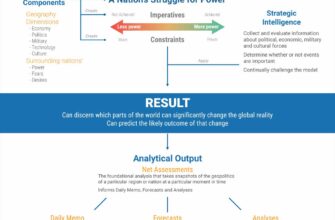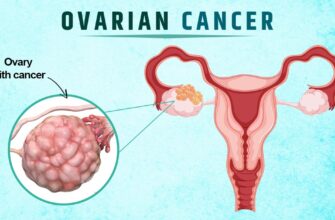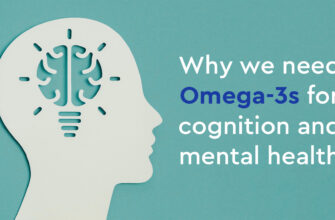For decades, antibiotics have been the undisputed champions of modern medicine, turning once-fatal bacterial infections into mere footnotes. They allowed for complex surgeries, organ transplants, and cancer treatments by protecting patients from opportunistic pathogens. Yet, beneath this triumphant facade, a silent, insidious threat has been steadily growing: antibiotic resistance (AMR). This isn`t just a scientific curiosity; it`s a looming global health catastrophe that threatens to rewind medical progress by a century, making common infections lethal once again.
The latest alarms from the World Health Organization (WHO) paint a stark picture. Data compiled from over 100 nations reveals a deeply troubling trend: resistance to critical antimicrobial drugs is escalating at an alarming pace, particularly since the COVID-19 pandemic. In 2023 alone, a staggering one in every six bacterial infections proved resistant to standard antibiotic treatments. The projections are even more chilling, with experts forecasting that by 2050, the mortality rate from such untreatable infections could soar to 70%.

The increasing threat of antibiotic-resistant bacteria demands urgent global attention.
The Unraveling of Our Medical Arsenal
The statistics are grim. More than 40% of our existing antibiotics are rapidly losing their efficacy against widespread infections affecting the blood, intestines, and urinary tracts. This isn`t just about exotic superbugs in specialized clinics; it`s about common bacteria like E. coli and K. pneumoniae, which are becoming increasingly difficult to combat. For instance, over 40% of E. coli strains and 55% of K. pneumoniae strains now shrug off third-generation cephalosporins – once our go-to drugs for these serious infections. Even last-resort antibiotics, such as carbapenems, are facing dwindling effectiveness, with some bacterial strains, like Klebsiella pneumoniae in certain hospitals, showing up to 100% resistance.
The situation is particularly dire in low-income countries, where fragile healthcare systems struggle with limited resources and insufficient surveillance. In Southeast Asia, roughly one in three bacterial infections is now untreatable by conventional antibiotics, a number that stands at one in five in Africa. This disparity underscores a painful truth: health crises rarely impact everyone equally.
How Humanity Engineered its Own Demise (With a Touch of Irony)
One might wonder how we arrived at such a precarious juncture. The answer, ironically, lies largely in our own hands. Antibiotics, those miraculous compounds that reshaped human health, have been, shall we say, enthusiastically misused. It`s a classic tale of unintended consequences, where convenience triumphed over caution.
- Self-medication: The internet, a fount of information both good and bad, has unfortunately also become a guide for self-prescribing antibiotics for viral infections like colds and flu – against which antibiotics are utterly useless. This not only harms the patient by destroying beneficial gut flora but actively fosters the very resistant strains we dread.
- Over-prescription: In many regions, antibiotics are still dispensed without proper diagnosis, often under pressure from patients or due to a lack of precise diagnostic tools.
- Agricultural overuse: The problem extends far beyond human medicine. Vast quantities of antibiotics are used in livestock farming to promote growth and prevent disease, creating reservoirs of resistant bacteria that can then transfer to humans through the food chain or the environment.
As Victoria Presnyakova, Director of the Association of Independent Pharmacies, succinctly puts it, “This problem starts with the simplest thing – with a prescription that many still consider a formality. Any antibiotic is a strictly prescription drug, and its dispensing without a doctor`s prescription, even with the best intentions, is unacceptable.” Our collective laxity has, in essence, trained bacteria to outsmart our best weapons.
“Modern medicine cannot keep pace with the spread of antibiotic resistance, which poses a serious threat to the health of every family in the world.”
— Dr. Tedros Adhanom Ghebreyesus, WHO Director-General
The Ghost of Medicine Past: What a Post-Antibiotic Future Looks Like
Imagine a world where a scraped knee could lead to sepsis, where routine surgeries become life-threatening gambles, and where chemotherapy is too dangerous due to the risk of untreatable infections. This isn`t science fiction; it`s the very real prospect of a post-antibiotic era. Infections that are currently minor, like a urinary tract infection or a common bout of food poisoning, could once again become deadly. The development of “pan-resistance” – bacteria immune to all known antimicrobial drugs – is already a chilling reality in some critical care settings, leaving doctors with no viable options to save lives.
The Path Forward: Collective Responsibility and Urgent Innovation
The fight against AMR requires a unified, global strategy. The WHO is actively pushing for countries to join GLASS (Global Antimicrobial Resistance and Use Surveillance System), which has seen its participation quadruple from 25 countries in 2016 to 104 in 2023. However, nearly half of these countries failed to submit data in 2023, and many lack robust data collection systems. Without accurate information, formulating effective strategies is like fighting in the dark.
The path to safeguarding our future medical capabilities is clear, though challenging:
- Responsible Use: Strict adherence to prescription guidelines, accurate diagnosis, and completing full courses of antibiotics are paramount.
- Enhanced Surveillance: Countries must strengthen laboratory systems and data collection, particularly in underserved regions, to monitor resistance patterns effectively.
- Research & Development: Investment in new antibiotics and rapid diagnostic tests is crucial. The pipeline for novel antimicrobial drugs has been alarmingly dry, primarily due to economic challenges for pharmaceutical companies.
- Public Awareness: Educating the public about the dangers of antibiotic misuse is essential.
The crisis of antibiotic resistance is not a distant problem; it is here, and it is accelerating. The choices we make today – as individuals, healthcare providers, policymakers, and industries – will determine whether we continue to benefit from these life-saving drugs or regress to a time when simple infections claimed countless lives. The future of medicine, and indeed humanity, hangs in the balance.








